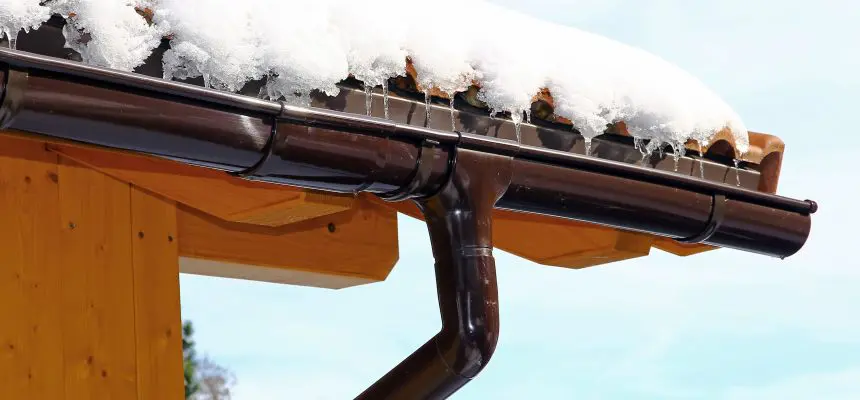Since the temperature and environment are not ideal you will rarely find roof repairs being done in winter. After all, it’s dangerous to work on an icy roof. Unfortunately, this does not mean that roofs don’t get damaged. There is still the risk of damage to your roof due to heavy snow, ice, and cold temperatures. If you wait until spring to call in the roofing companies in your area, you will end up with even bigger problems and a much larger repair bill.
What Repairs Can Be Done in Winter?
There are a few repairs that can be done during the winter. These include:
- Repairing flashing
- Repairing shingles
- Repairing gutters
We’ll take a closer look at each of these below.
Repairing Flashing
Flashing is necessary for the projections, edges, gaps, joints, intersections, valleys, and grooves in a roof structure that are at risk for water seeping through. Since water leaking in can result in mold, mildew, and major flooding, flashing would be your first line of defense to keep water from getting into areas that it shouldn’t.
If you live in an area where extreme weather is common, you may not be able to avoid damage to your flashing. Elements such as strong winds, heavy snow, and hail could cause flashing to loosen and pull away, which allows water to seep into your attic and the interior of your home.
Many times, roof leaks occur where the roof meets vents, dormers, skylights, chimneys and other areas where flashing covers. Therefore, it’s important to take the time to check the flashing in these areas for dried out/loose sealants, holes, bending, cracks, or other signs of damage/deterioration.
Repairing Shingles
During the winter, shingle roofs are highly likely to suffer damage due to heavy snowfall because shingles may become brittle in cold temps- especially if they’re old. Snow, ice, and wind can cause your brittle shingles to break off, crack, or chip. This exposes your roof and home to leaks- which can lead to water damage.
If you are missing shingles or your shingles are curled/cracked, moisture may seep into your home, leading to significant damage to your roof. If you notice that your shingles are damaged, you must take steps to repair the problem immediately or you may end up with major issues.
However, since asphalt shingles are prone to cracking or breaking, it’s best to only work with them if you have to. Additionally, these types of shingles require heat from the sun during the sealing process.
Repairing Gutters
Gutters are critical for keeping your roof clear and dry during the winter. They help to safely remove water from your roof. That being said, during the winter, it’s likely to become clogged due to the twigs and other debris that collect in them.
As snow begins to melt, if your gutters are broken, blocked, or run-down, it could cause water to get trapped on the roof, which could cause ice dams to form. It could also cause water damage to your roof and even get inside your home. Finally, extra weight from snow can cause gutters to break down and possibly fall off the house.
If your gutters are not functioning properly, you should not ignore them because the pooling water can cause major damage. As long as the weather is dry, gutters can be repaired and installed during the winter without problems.
Conclusion
A leaky roof is problematic, no matter when it happens. Even when the leak appears small, it can cause significant damage. If you allow your roof’s underlayment and structure to be exposed to water from snow, it could ultimately collapse.
This is why any damage you notice during the winter months needs to be addressed right away. While it’s not common for repairs to be done during the winter due to the harsh conditions, you don’t want to postpone repairs until spring. If you live in New York, New Jersey, or Connecticut, you’ll want to contact the roof repair professionals at A&J Reliable to fix the problems before they get too out of control. They have the know-how to make sure the job is done right. If you delay the repairs, it will only get worse and could cause more damage to your home.





